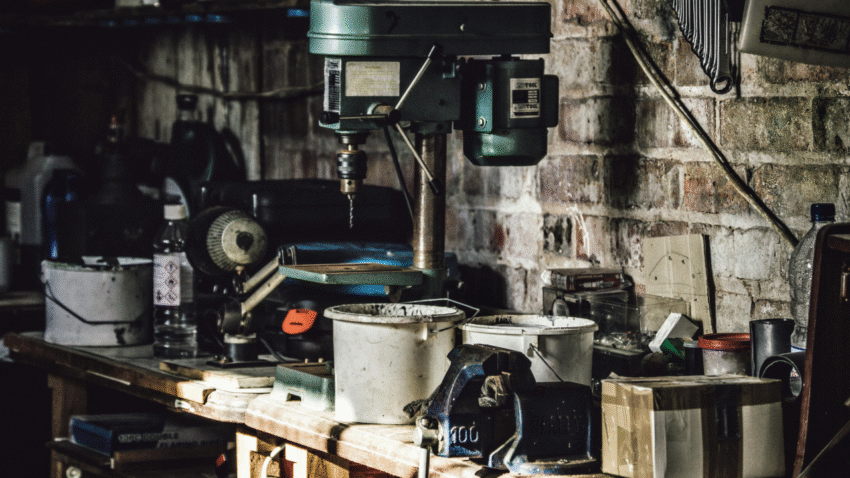Introduction
A sticking garage door lock can be more than just an inconvenience—it can leave your garage vulnerable to security risks or make it difficult to access your space when you need it. Over time, dirt, rust, and weather exposure can cause the lock to jam, making it hard to turn the key or engage the locking mechanism. In this guide, you’ll learn how to fix a sticking garage door lock with simple, effective steps that restore smooth operation and keep your garage secure.
Why Fixing a Sticking Garage Door Lock Matters for Your Garage
Your garage door lock plays a key role in protecting your tools, equipment, and vehicles. When it’s sticking or jammed, it not only wastes time but can also:
- Compromise security by preventing you from locking the garage properly.
- Cause damage to the lock cylinder if you force it.
- Increase wear on keys, which can bend or break in the lock.
- Lead to costly repairs if the problem is ignored.
Fixing the lock promptly ensures smooth operation, improves security, and extends the life of your locking system.
Step-by-Step Guide to Fixing a Sticking Garage Door Lock
1. Gather the Necessary Tools and Supplies
Materials:
- Graphite powder or silicone-based spray lubricant
- Mild detergent and water
- Rust remover (if needed)
- Cotton swabs or soft cloth
- Replacement lock cylinder (optional if lock is damaged)
Tools:
- Screwdriver
- Small wire brush
- Key for the lock
- Safety gloves
2. Identify the Cause of the Sticking
Common causes of a sticking garage door lock include:
- Dirt and dust buildup inside the cylinder.
- Rust or corrosion from exposure to moisture.
- Worn or bent key.
- Misalignment between the lock mechanism and latch.
Inspect the lock closely and test with your key to determine the likely issue before you start repairs.
3. Clean the Lock Exterior
Use a soft cloth and mild detergent to wipe away dirt, grease, and debris from the outside of the lock. This prevents loose particles from entering the cylinder during repairs.
4. Lubricate the Lock Cylinder
The most common and easiest fix for a sticking lock is proper lubrication:
- Insert the lock’s key halfway into the cylinder.
- Apply a small amount of graphite powder or silicone-based spray directly into the keyway.
- Insert and remove the key several times, turning it gently to work the lubricant through the pins.
⚠ Avoid WD-40 for long-term lubrication—it can attract dust and cause buildup inside the lock over time.
5. Remove Rust and Corrosion (If Present)
If your lock is metal and exposed to weather, rust may be the culprit:
- Use a small wire brush to gently scrub away visible rust from the exterior.
- Apply a rust remover to the affected area according to the manufacturer’s instructions.
- Wipe clean and dry before lubricating.
6. Check the Key
Examine your key for bends, burrs, or worn edges. A damaged key can cause sticking even if the lock is clean. If your key is worn, have a new one cut from the original factory code or from a less-used spare key.
7. Realign the Lock Mechanism
Sometimes the lock works fine but sticks because the latch is misaligned with the garage door frame:
- Open the door and locate the lock’s bolt or latch mechanism.
- Loosen the screws holding the lock plate in place.
- Adjust the plate until the bolt moves smoothly in and out when turning the key.
- Tighten screws securely.
8. Replace the Lock Cylinder (If Needed)
If cleaning, lubrication, and alignment don’t fix the problem, the lock cylinder may be damaged internally:
- Use a screwdriver to remove the screws securing the lock to the door.
- Slide out the old cylinder and insert the new one, following the manufacturer’s instructions.
- Test the new lock with its keys before tightening all screws.
Common Mistakes to Avoid
- Forcing the Key
- Problem: Can bend or break the key inside the lock.
- Solution: Stop and troubleshoot the cause of sticking instead of forcing it.
- Over-Lubricating with Oil-Based Products
- Problem: Attracts dirt and grime, making the problem worse over time.
- Solution: Use graphite powder or silicone-based spray instead.
- Ignoring Rust
- Problem: Rust spreads and damages internal lock components.
- Solution: Remove rust promptly and protect the lock with a weatherproof cover if outdoors.
- Not Checking the Key
- Problem: Replacing or repairing the lock won’t help if the key is the real issue.
- Solution: Test the lock with a different key before starting repairs.
- Skipping Regular Maintenance
- Problem: Locks wear faster when never cleaned or lubricated.
- Solution: Clean and lubricate twice a year, especially in dusty or damp environments.
Extra Garage Tips & Hacks
- Install a Lock Cover: Protects the lock from rain, snow, and dust.
- Mark Your Keys: If you have multiple garage keys, label them to avoid using the wrong one.
- Upgrade to a Keyless System: If sticking locks are a recurring issue, consider installing a keyless entry pad for convenience and security.
- Related Tip: See our guide on how to maintain your garage door for smooth operation for more preventative maintenance ideas.
Conclusion
Learning how to fix a sticking garage door lock can save you from frustration, security risks, and costly locksmith visits. By identifying the cause, cleaning and lubricating the lock, and making small adjustments, you can restore smooth, reliable operation.
Bookmark this guide to keep your garage secure, accessible, and in top condition year-round.
